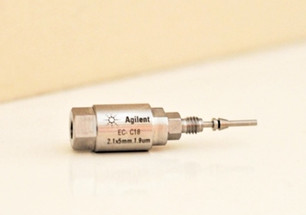Posted by Chrom Tech on 14th Oct 2025
Should I Use a Guard Column
In any liquid chromatography (LC) system, the HPLC column is the heart of the separation process. It is here that analytes are isolated for both qualitative and quantitative analysis. While HPLC columns inevitably need replacement over time, there are simple and cost-effective ways to extend their lifespan without compromising accuracy or reproducibility. One of the best methods is the use of a guard column.
“Guard columns are a simple, cost-effective way to maximize the life of your LC column.”
What Is a Guard Column?
A guard column is a short, replaceable cartridge—typically one to two inches long—installed between the injector and the analytical column. It connects using standard HPLC fittings and serves as a protective barrier that captures contaminants before they can reach the analytical column.
The guard column should contain a stationary phase identical or similar to that of the main analytical column to ensure consistent retention and interaction behavior. To prevent backpressure or dead volume, the internal diameter (ID) should closely match that of the analytical column, and the length should remain as short as possible.
Why Use a Guard Column?
Over time, impurities such as fatty acids, salts, and proteins can accumulate within a column, leading to pressure buildup, baseline noise, and shortened column lifespan. Guard columns trap these contaminants before they reach the analytical column, protecting your primary investment.
Because guards are far less expensive than full analytical columns, replacing them regularly saves money and reduces downtime. Cleaner separations also lead to sharper peaks, more consistent baselines, and improved reproducibility across runs.
When Should a Guard Column Be Replaced?
The replacement frequency depends on your mobile phase composition, sample cleanliness, and usage frequency. A steady rise in system pressure is often a clear sign that the guard column has become saturated with retained material. Replacing it promptly prevents breakthrough contamination into the main column.
Fortunately, guard replacement is quick and inexpensive, keeping laboratory downtime minimal. Pairing guard columns with good sample preparation practices—such as using Chrom Tech syringe filters to remove particulates before injection—further extends column life and maintains consistent chromatographic performance.
Summary
Guard columns are a simple yet powerful tool for improving chromatography reliability and reducing operating costs. They extend the lifespan of your analytical column, minimize contamination, and maintain the integrity of your results. For assistance selecting the correct guard or analytical column for your method, contact our Chrom Tech team at support@chromtech.com.
Frequently Asked Questions About HPLC Guard Columns
What does a guard column do?
A guard column protects your main HPLC column by capturing particulates and chemical impurities before they enter the analytical column. This preserves column efficiency and improves run-to-run reproducibility.
How often should I replace my guard column?
Replacement frequency depends on solvent type, sample cleanliness, and usage. Replace the guard when system backpressure increases or peaks begin to distort—typically every few weeks for high-throughput applications.
Does using a guard column affect separation quality?
When matched to your analytical column’s stationary phase and ID, a guard column has minimal impact on separation quality. In fact, it helps maintain long-term column performance and peak symmetry by preventing contamination.
What other steps help protect HPLC columns?
In addition to guard columns, always filter samples with syringe filters, use high-purity solvents, and follow regular maintenance for fittings and seals. Proper sample preparation prevents clogs and extends both guard and analytical column lifetimes.

